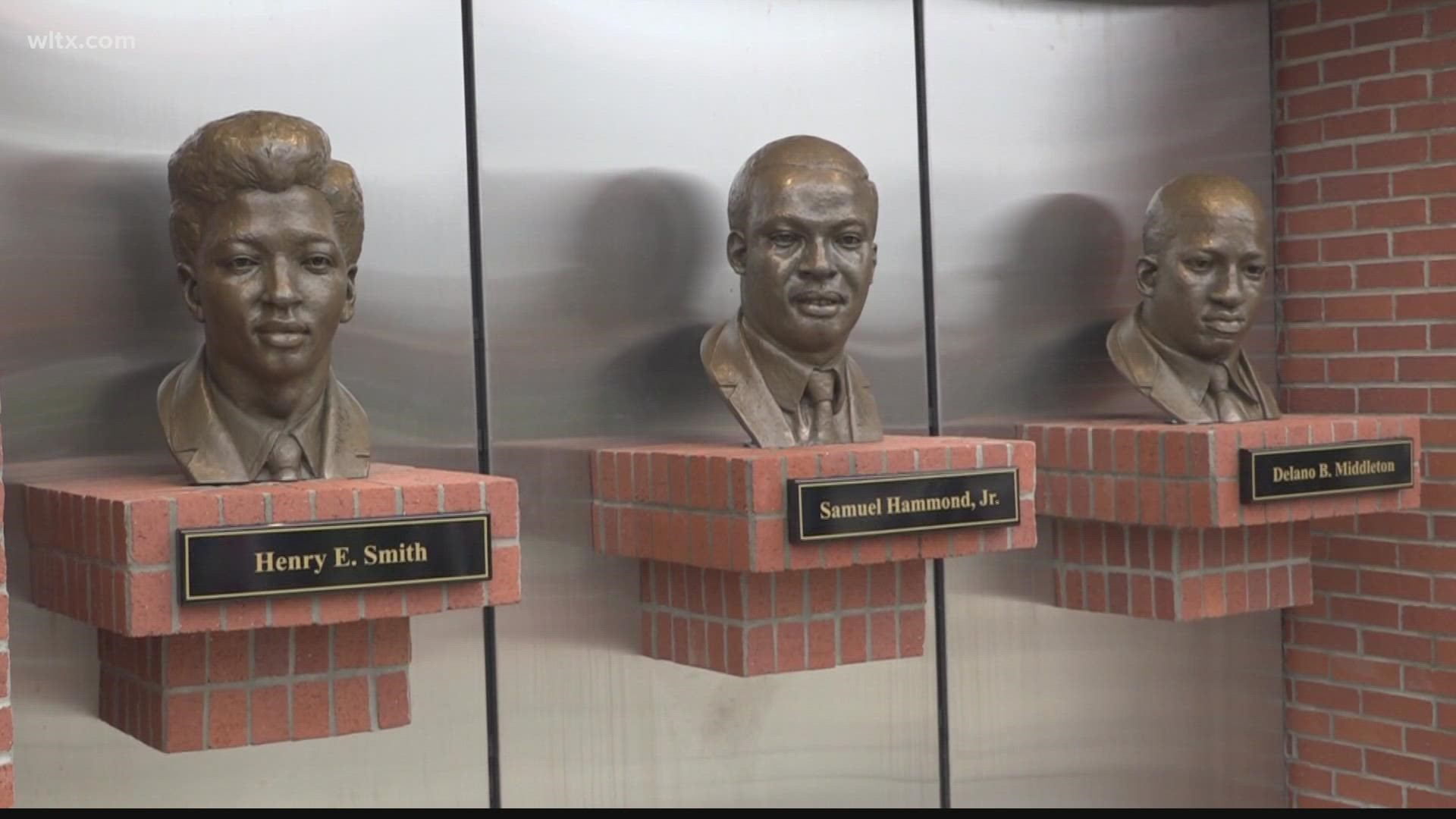ORANGEBURG, S.C. — South Carolina State University commemorated the 54th anniversary of the Orangeburg Massacre on Tuesday by unveiling a new monument to the three men who were shot and killed following a 1968 civil rights demonstration near campus.
The permanent monument has the the busts of Henry Smith, Samuel Hammond and Delano Middleton, the three men killed during the protest centering around the segregation of the All-Star Bowling Lane.
The sculptures were created by artist Dr. Tolupe Filani, chair of the visual and performing arts at SC State. The semicircular monument around the busts was designed by architect Bob Probst and built by AOS Specialties Contractors.
“It was an opportunity for me to kind of contribute my own quarter by having to further celebrate these individuals as a way of inspiring younger ones," said Filani.
SC State Interim President Alexander Conyers said, "The Orangeburg Massacre is often overlooked in the story of African Americans who struggled to make the world better during the Civil Rights Movement. All of us benefit today from the courage and sacrifices of the people who made their voices heard that day in 1968. We at SC State have a sacred duty to further the message as our nation still works toward social justice for all Americans 54 years later."
On February 5, 1968, a group of approximately 40 students from SC State peacefully protested at the bowling alley. The next night the crowd grew and police detained several of the students, including organizer John Stroman. Angry protesters broke a window at the bowling alley, causing chaos, and setting off police, who began beating student protestors with billy clubs.
On February 8, 1968, student protestors set a bonfire on the SC State campus. Police and firefighters attempted to put out the blaze and one police officer was injured. Soon after, officers with the South Carolina Highway Department began shooting live ammunition into the crowd of approximately 200 protestors, hitting 27 people, most of whom sustained injuries to their back while attempting to run away. Smith, Hammond, and Middleton were killed.
Ora Susan Hughes is the sister of the late Henry Smith.
“Henry was a very outstanding person. He was super intelligent. He was a sophomore and he had just turned 19. I could go on and on about how we loved him, we still love him," she said.
She also says seeing her brother being honored alongside the other victims brought her some peace.
“As with any other thing, that doesn’t give me a lot of closure, but it helps and I am just glad the people are still remembering them three students that fell that tragic night," said Hughes.
Conflicting reports at the time said that the protestors had opened fire on law enforcement, an allegation that protestors denied and subsequent investigations could not prove.
Dr. Cleveland Sellers shared a firsthand account as a survivor of the massacre saying former SC governor Robert McNair changed the narrative.
“We need to rewrite the narrative of what the governor said had taken place," said Sellers.
He says many retellings of what happened were inaccurate.
“The students were always on that campus, they never left the campus. He said they had gotten off the campus and were running to go downtown through the police line and there was a shootout. That didn’t happen. That’s a part of the history we have been trying to correct over the last 40 years."

